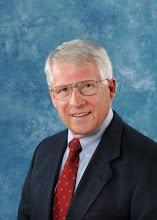On April 28, 2009, CARRI brought together its three partner communities for a one-day conference in Charleston, South Carolina focusing on five topics – Executive Leadership and Community Resilience; The Private Sector and Community Resilience; Enhancing Community Resilience through Coordination; Building Local Resilience Capacity; and Local Government Leading the Way. The goal of the conference was to bring together each partner community to share lessons learned and create a series of white papers in each area of focus. These papers are intended to showcase successful resilience strategies in the partner communities so that other communities across the country can apply them in their own planning and resiliency efforts.
The CARRI Research Director, Dr. Tom Wilbanks, provided a quick summary of his observations of the conference to a group of CARRI affiliated scholars from across the nation. I thought it would be useful to share Tom’s observations via this blog. In the next few weeks, I will share other observations from the forum.
Tom wrote: On April 28, … I attended a “CARRI Partner Community Forum” in Charleston, SC. In essence, this event represented a handoff of community resilience responsibilities from the CARRI community teams to local community leaders. It included four mayors (Charleston and North Charleston, Memphis/Shelby County, and Gulfport), three city administrators, and local people representing private sector roles, cross-institutional local coordination, and local capacity development outside traditional government, e.g., in NGOs and faith-based institutions.
We were there simply to listen to what the community representatives had to say about community resilience, both to learn from their perspectives and to compare them with what has been emerging from the research component. Here is a summary of the messages that we heard:
(1) Community resilience means all-hazards planning – and also links with other community issues, such as poverty. In order to sustain itself, resilience has to show that coordination offers value-added in daily operations, not just in the event of an emergency.
(2) A key step on the way to resilience is tracing out a host of interdependencies: what depends on what – infrastructures, resources, information, authorizations, etc., etc.
(3) Resilience means that, in a community, people who need to respond together in an emergency know each other ahead of time. From Mayor Wharton: “A community that prepares together is going to stay together when something happens.” In fact, the benefits from broader acquaintanceships in a community extend well beyond the immediate purpose of preparedness.
(4) Timely communication structures that bridge community diversity are critical: especially non-traditional structures as normal structures fail to operate during an emergency. NGOs and faith-based organizations are often adaptable gap-fillers if they are included in the resilient community network ahead of time.
(5) Communities can do a lot on their own, and in fact resilience means taking responsibility for one’s own future rather than accepting dependence on others; but resilience also means linking local resources with resources (and rules) beyond community boundaries (e.g., FEMA rules on what costs that will be reimbursed…).
(6) It is critically important to care about the lives of the responders and their families – which requires advance preparation because this can get lost in the pressure of immediate response situations.
(7) It is also critically important to know one’s own community in great detail, especially regarding special needs. Again, NGOs and FBOs can help with this, because they often work with the least advantaged among the population.
(8) A key to response and recovery is getting businesses and schools up and operating quickly. Mayor Warr got everybody’s attention with his story of assuring that Gulfport’s local Walmart, Home Depot, etc. were very quickly in a position to sell the materials and commodities needed for response and recovery –- which meant that the sales taxes from response purchases went back into the community itself rather than elsewhere.
Our feeling was that these lessons from community experience – being offered by community people who are not generally very familiar with the research literatures – are in fact very consistent with the messages coming out of our summaries of resilience-related research. This is encouraging on both ends of the process. Rather than being a situation where research needs to be used to correct mistaken community impressions, or where community experiences need to be used to correct misguided research, the substantial overlap between lessons from experience and lessons from research needs to be highlighted as a very welcome emergent finding from the CARRI adventure.
Subscribe to:
Post Comments (Atom)

This is a test.
ReplyDelete